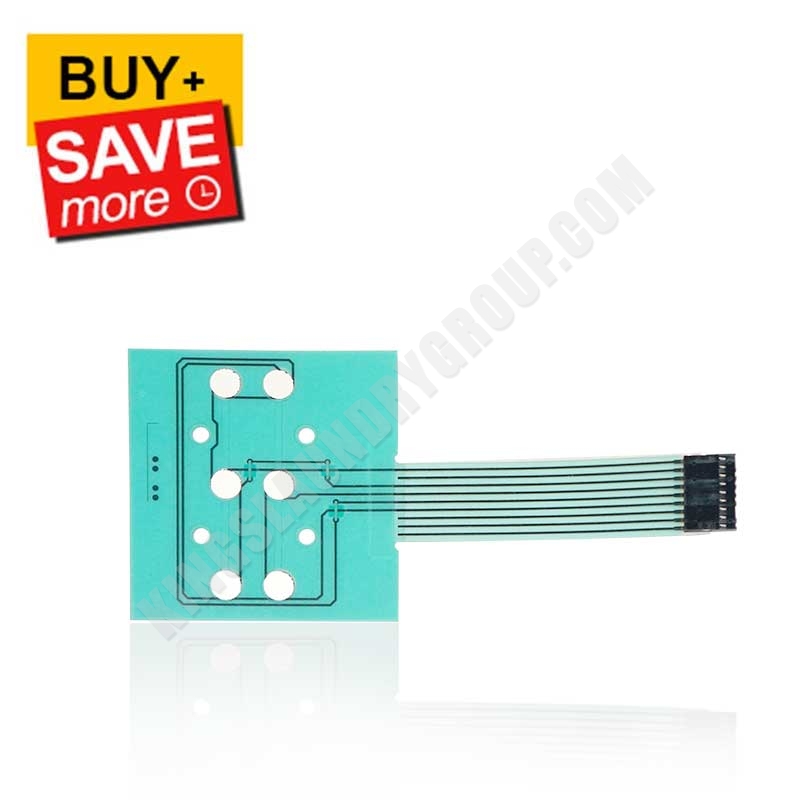Essential Features to Look for When Picking a Membrane Switch
Essential Features to Look for When Picking a Membrane Switch
Blog Article
Understanding the Functionality of Membrane Layer Changes for User User Interface Devices
The functionality of membrane layer changes stands for a considerable advancement in individual interface layout, combining performance with aesthetic adaptability. As industries increasingly prioritize customer experience, understanding the nuances of membrane layer switch innovation comes to be essential.
What Are Membrane Buttons?
Membrane buttons are cutting-edge user interface devices that facilitate user interaction with electronic tools. These functional components consist of numerous layers, consisting of a visuals overlay, spacer, and a published circuit layer. The layout permits a smooth assimilation right into numerous digital tools, boosting both the visual and functional aspects of user interfaces.
Membrane layer buttons are generally used in a broad array of applications, from household appliances to industrial equipment and clinical gadgets. Their construction usually includes a thin account, making them a perfect choice for compact layouts. The responsive feedback provided by these buttons can be crafted to satisfy particular individual preferences, ensuring reliable interaction between the customer and the device.
Toughness is one more significant benefit of membrane layer switches, as they are immune to dirt, wetness, and chemicals, which improves their lifespan sought after environments. In addition, these buttons can be customized in terms of shape, dimension, and visuals design, permitting for branding and user-specific functions. In general, membrane layer switches stand for a functional service for boosting individual experience in electronic gadgets, combining functionality with visual appeal in a reliable way.
Just How Membrane Switches Over Work
Operating on a straightforward concept, membrane changes utilize a layered construction to sign up individual input efficiently. Each button contains several layers, consisting of a printed circuit layer, a spacer layer, and a leading graphic layer, which are designed to collaborate perfectly. When a customer presses the top layer, it compresses the spacer layer, bringing the conductive components of the circuit layer right into call with each various other.
This get in touch with develops a shut circuit, signaling the gadget to execute a particular feature. The style permits numerous configurations, including responsive feedback, which can enhance the individual experience by giving a physical sensation upon activation. The materials utilized in membrane layer buttons commonly consist of flexible substrates, such as polyester or polycarbonate, which make sure resilience and durability versus damage.

Secret Advantages of Membrane Switches

One more significant benefit is their density. Membrane buttons are slim and lightweight, which makes it possible for manufacturers to conserve area in their devices without giving up performance. This feature is specifically valuable in applications where weight and quantity are critical factors to consider.
Furthermore, membrane layer switches are immune to dust, moisture, and chemicals, improving their toughness. This strength prolongs their life expectancy and reduces the demand for frequent substitutes, resulting in cost financial savings in time.
Moreover, the responsive feedback supplied by membrane layer switches can be optimized to boost individual interaction. They can include functions such as elevated buttons or distinct clicks, boosting usability and individual experience.
Applications Throughout Industries
User user interface tools utilizing membrane layer buttons prevail in a vast variety of markets, showcasing their versatility and capability. Membrane Switch. In the clinical market, membrane layer switches are essential to tools such as analysis equipment and individual surveillance systems, where their durability and simplicity of cleansing are crucial for preserving read the article health criteria. Similarly, in the have a peek at this site automobile industry, these switches are utilized in control panel controls and infomercial systems, providing a sleek and contemporary interface for individuals.
In addition, the consumer electronics sector take advantage of membrane layer buttons in appliances and portable devices, where small layout and user-friendly interfaces enhance individual experience. Industrial applications additionally utilize membrane layer switches over for control panels in equipment and automation systems, emphasizing their toughness and resistance to harsh atmospheres.
In the aerospace and defense markets, membrane layer buttons are used in cockpit controls and equipment, where reliability and performance under severe problems are critical. In addition, the pc gaming sector increasingly includes membrane layer switches in controllers and game machines, adding to an interesting customer experience. Overall, the adaptability of membrane changes allows their prevalent usage throughout many industries, underscoring their relevance in modern interface style.
Future Patterns in Membrane Switch Technology

Additionally, making over at this website use of sophisticated materials, such as polycarbonate and polyester movies, is expected to climb, supplying enhanced toughness and resistance to environmental stressors. These products add to the overall longevity of membrane layer switches, making them suitable for harsher industrial applications.
Additionally, the unification of wise technology, including IoT connectivity, will certainly make it possible for membrane layer buttons to communicate with other tools and systems, promoting a more interactive individual experience. This fad aligns with the growing demand for smart devices throughout numerous fields, from healthcare to consumer electronics.
Lastly, personalization options are prepared for to expand, permitting producers to produce bespoke remedies customized to details user needs and choices. These developments will position membrane layer buttons as necessary parts in the evolution of interface innovation.
Conclusion
In verdict, membrane layer changes stand for a pivotal advancement in user interface modern technology, supplying a reliable and functional solution for varied digital applications. As improvements in material scientific research and touch noticing innovations proceed, the capability and applicability of membrane switches are expected to expand, strengthening their relevance in modern-day electronic devices.
Report this page